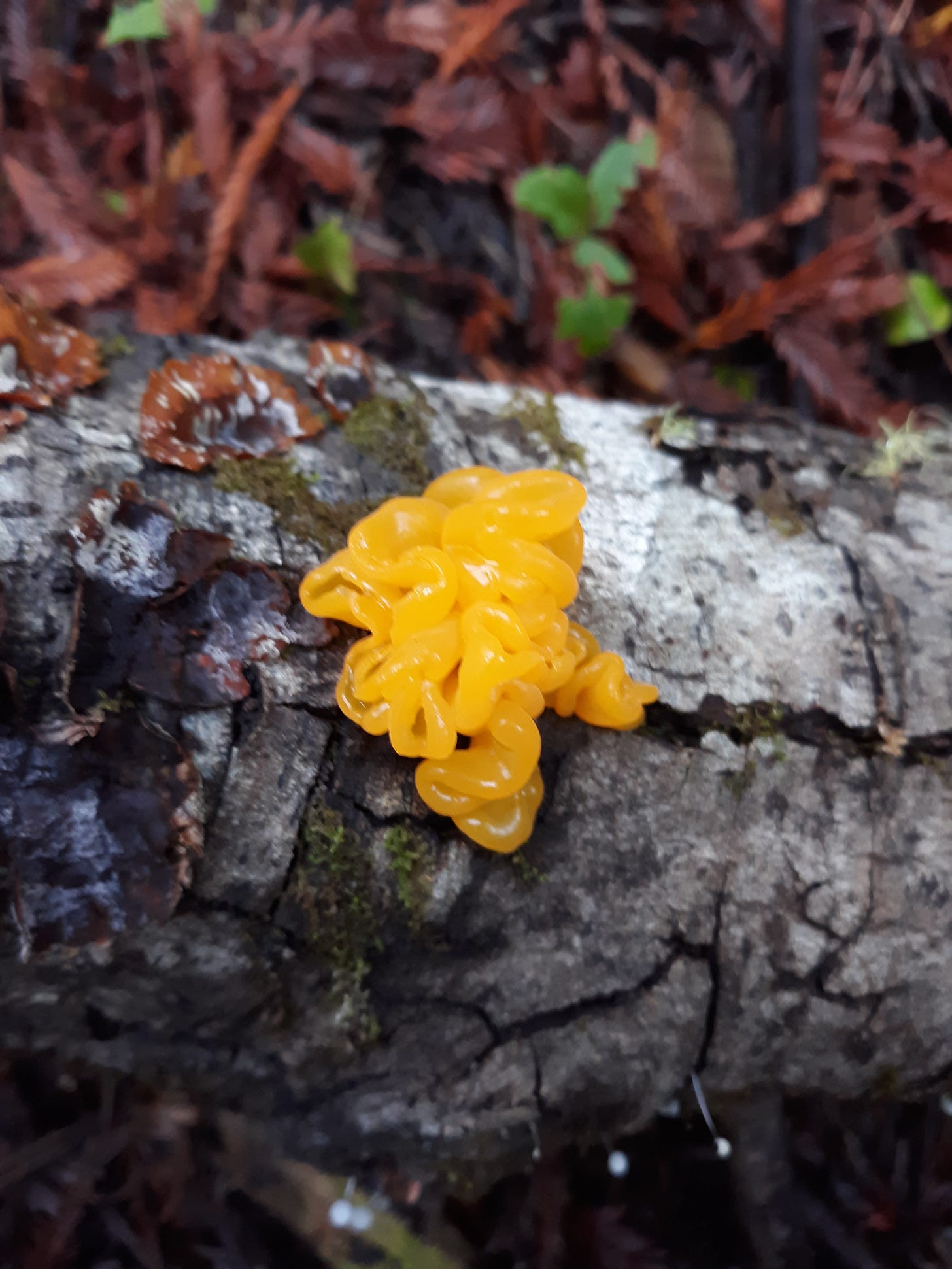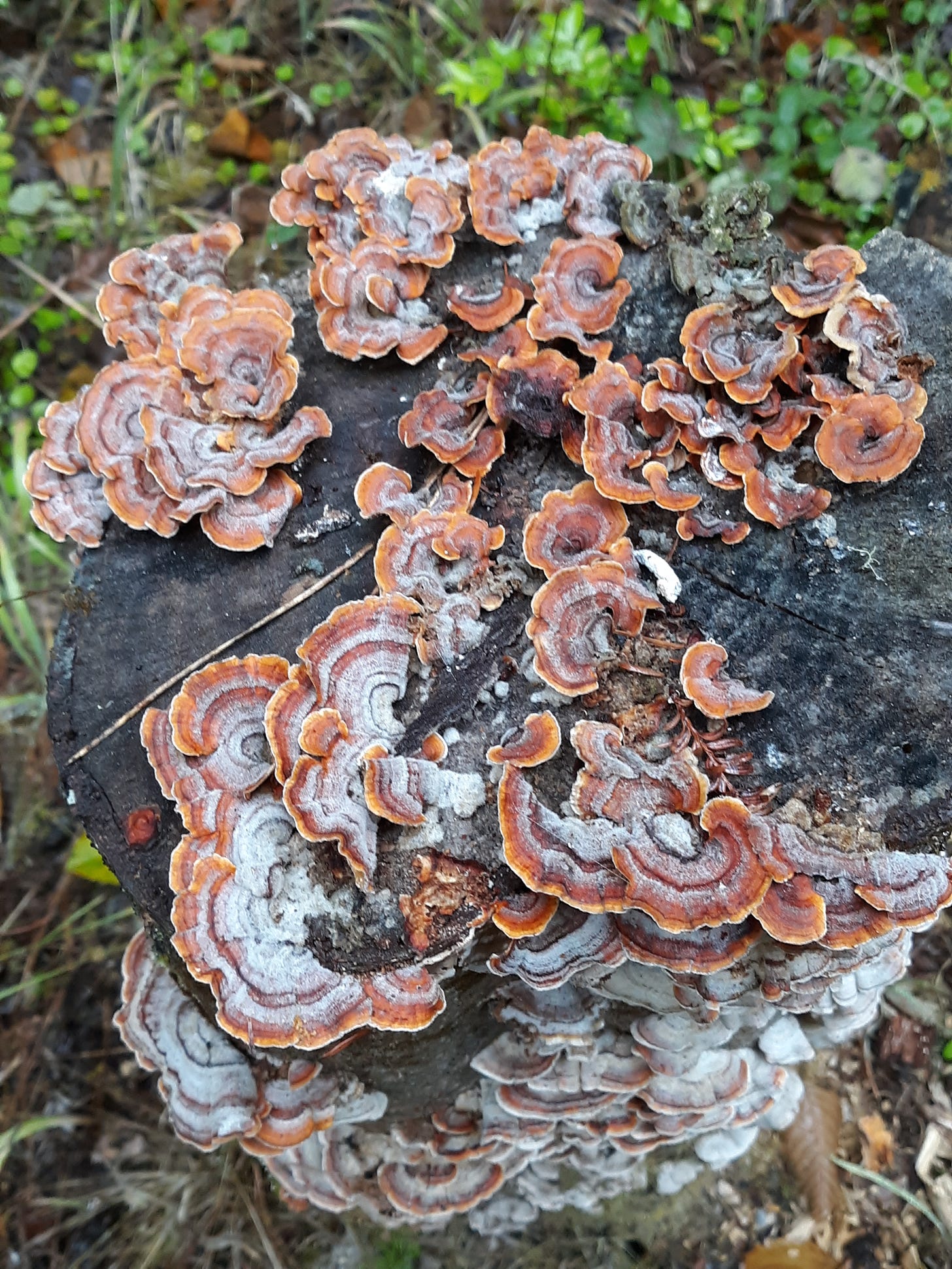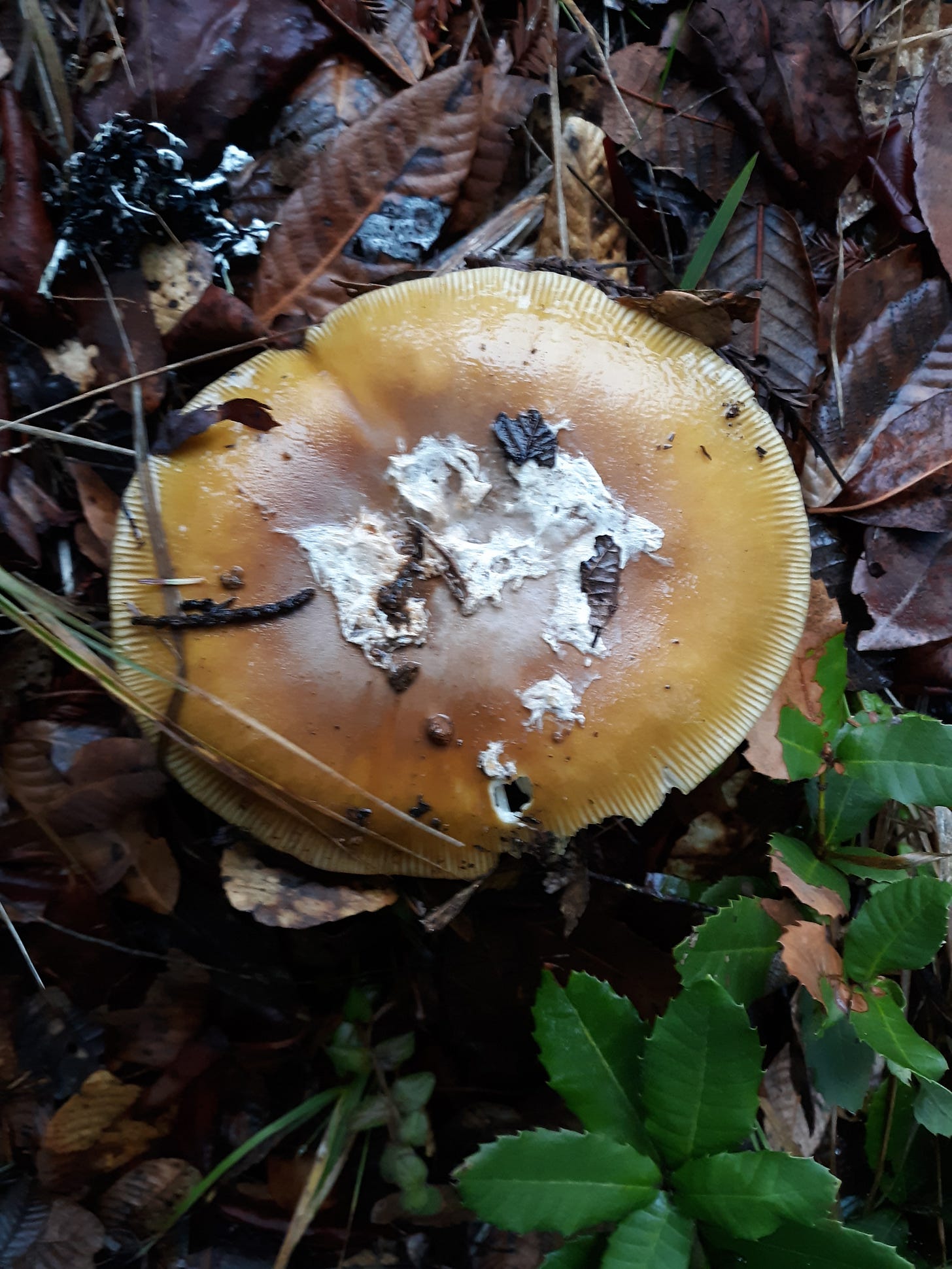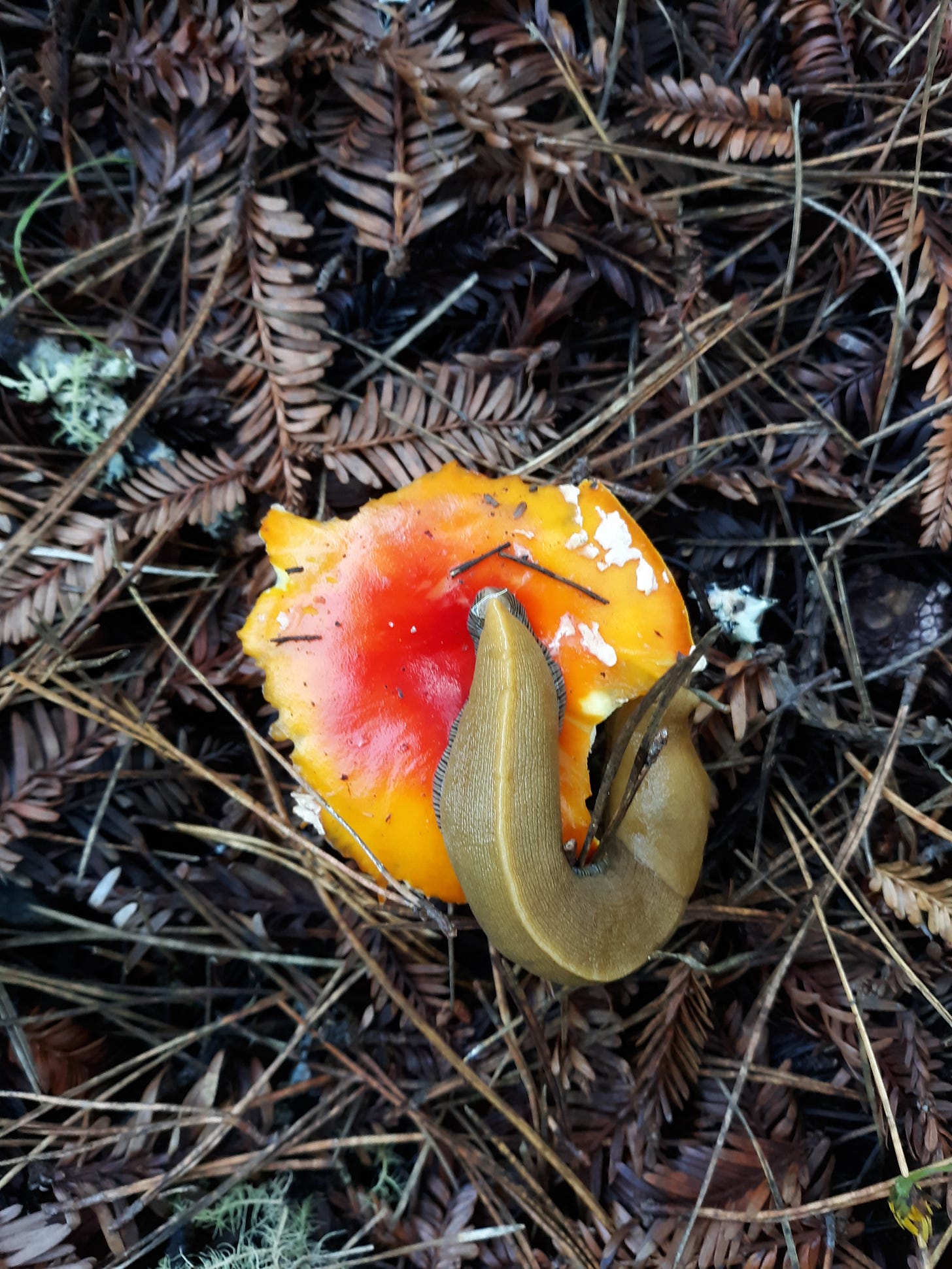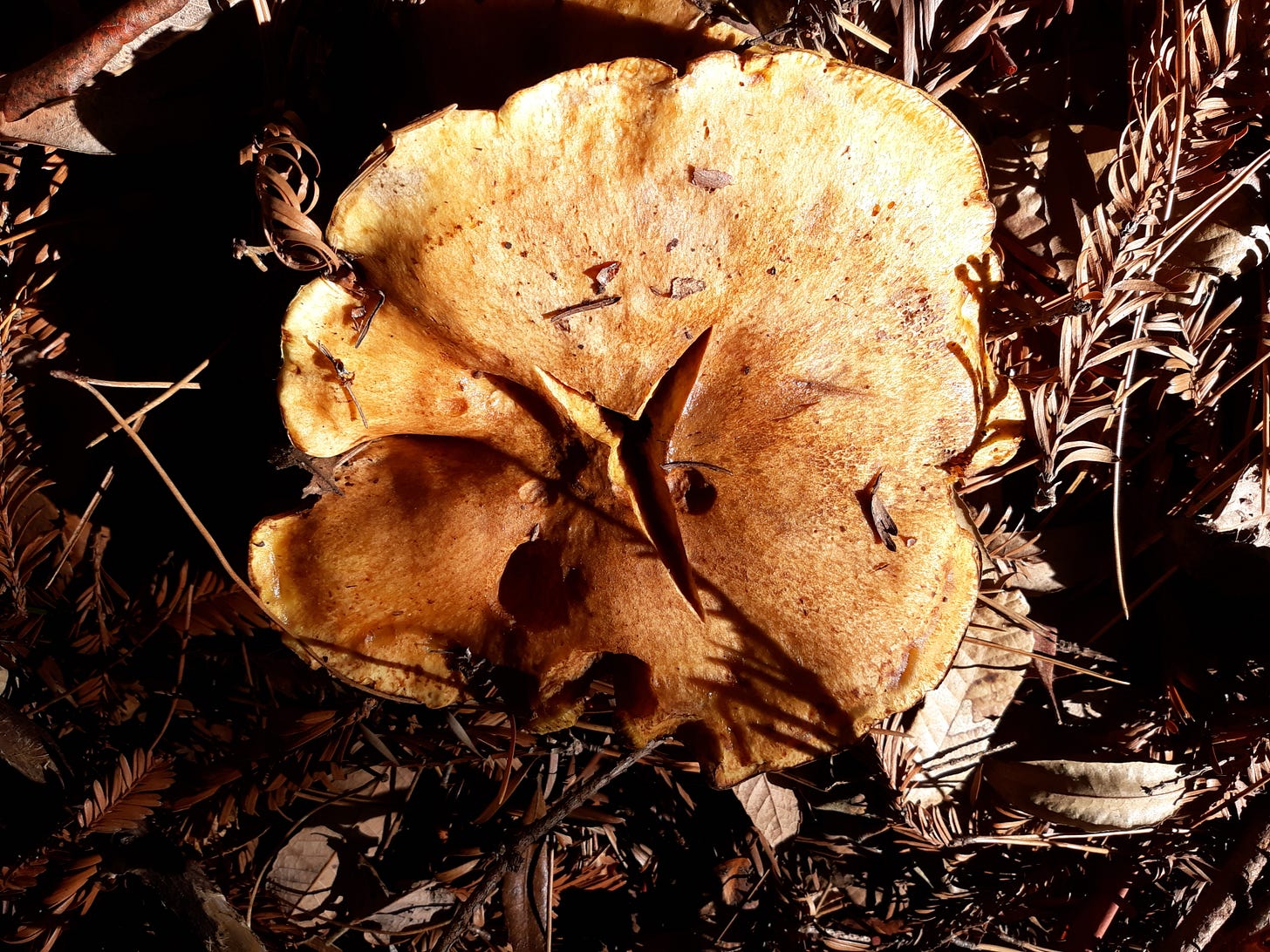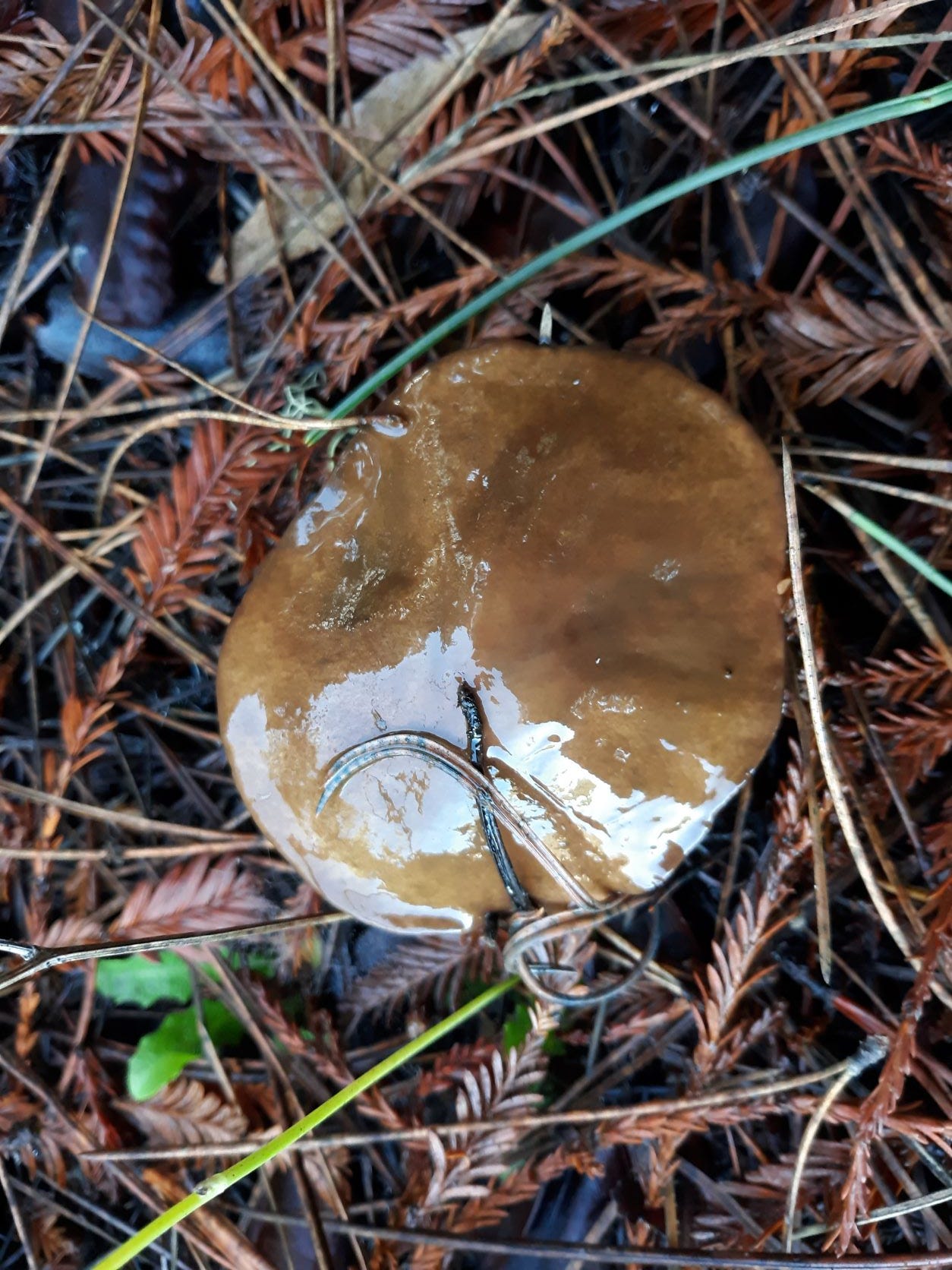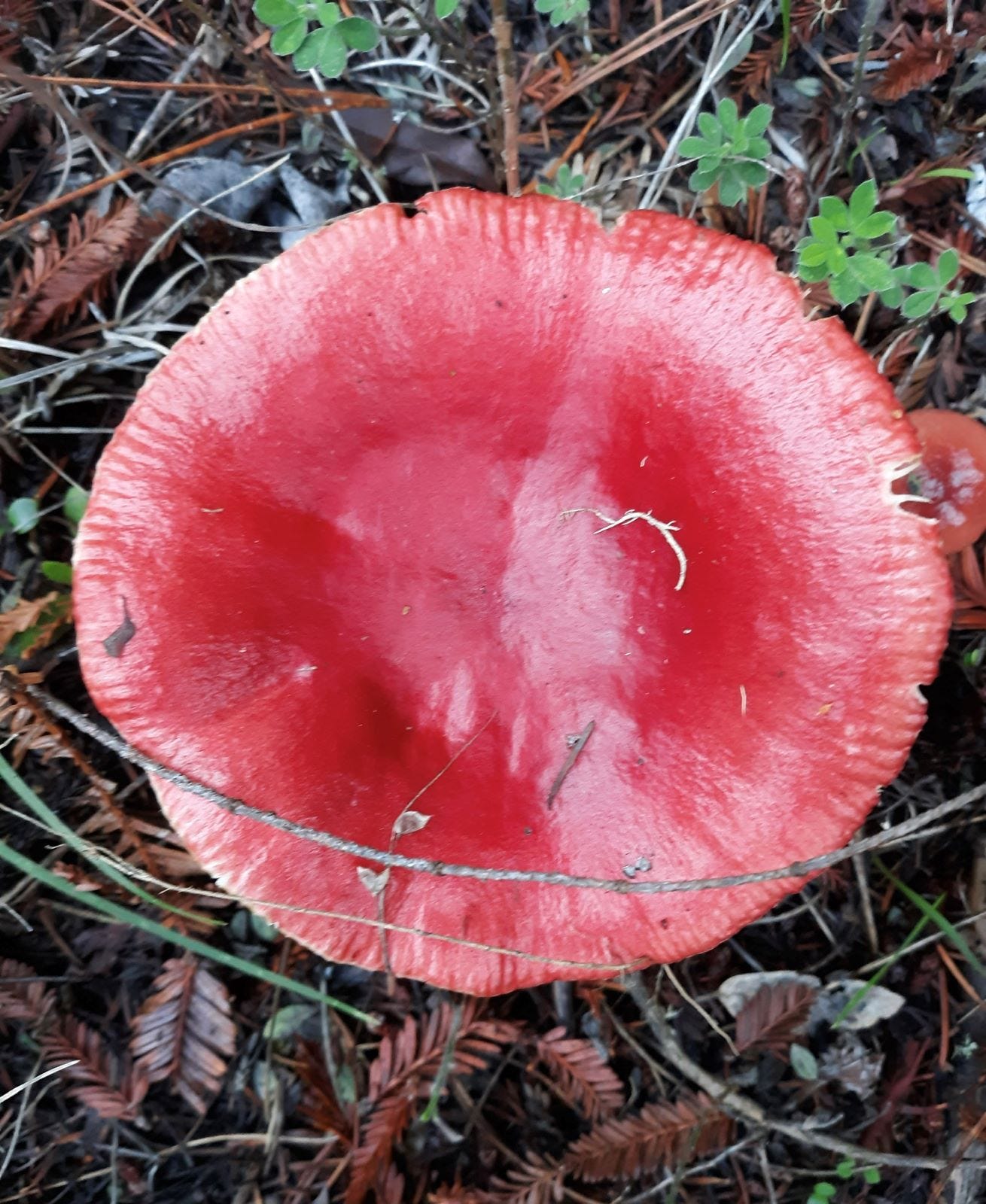You’re at Mother E, a free newsletter published every other Sunday. I’m telling the stories about our kinship and connection with other species in a climate-changing world. You can read more posts here. Did you miss the last newsletter? It’s here: Redwoods Rising to the Sky
This week’s photo essay focuses on mushrooms of the Mendocino coast. All photographs were taken by me in local walks in Mendocino County, California.
For a deeper dive into the importance of mushrooms in our lives, I recommend the entertaining documentary Fantastic Fungi. Enjoy!
Robin A.
RECENT RAINS HAVE “BLOOMED” MUSHROOMS across the forest floor. Mushrooms come from a wider family of organisms called fungi. These amazing organisms are not plants (no photosynthesis) and not animals. They occupy a special place in ecosystems.
Mushrooms are fungi that decompose matter, connect plant life underground, and even relay messages between trees. They are the fruiting body of a fungus that has a wide, delicate root-like mycelium web. This web lives below the surface of whatever the mushroom fungus is growing on— a rotting log, forest soil, animal manure, or trees.
Mushrooms and fungi feed on the dead organic matter left by plants, trees, and animals. They assist in decomposition, recycling that matter back into food stock for life forms. There is a lesson here for humans on dealing with waste. : )
“The kingdom Fungi comprises many millions of species of living organisms…Although fungi are exceptionally important in the functioning of global ecosystems, we generally go about our daily business unaware of their presence.”
Mushrooms of the Redwood Coast, by Noel Siegel and Christian Schwarz
Our food system is interconnected with fungi, both in the growing of food crops and the preparation of edibles like bread, cheese, coffee and tea, pickles, olives, chocolate, wine, beer, and other fermented foods. These food fungi help us digest foods better and improve the microbiota of our GI system. We have a symbiotic relationship with certain types of fungi just as many plants and trees do. Please note that many wild mushrooms are toxic or even deadly, so do not eat them unless you have an expert identify them for you as safe to consume.
Where do fungi fall in the plant/animal spectrum?
“Perhaps even more surprisingly, the portobello mushrooms [and all mushrooms] are more closely related to you than they are to plants, since fungi and animals share a more recent common ancestor than they do with plants!”
Mushrooms of the Redwood Coast, by Noel Siegel and Christian Schwarz
The first fungi on Earth evolved about 1.5 billion years ago, but mushrooms have been around for 715 to 810 million years. Since mushrooms do not biomineralize, they don’t leave fossil records and some mystery surrounds their evolution.
My walks have shown me a wide variety of mushrooms, from tiny peppercorn-sized black or beige mushrooms growing by the dozens to single orange-red structures bigger than two hands. Colors abound: black, brown, white, golden, yellow, orange, red, tan. I’ve even seen pictures of mushrooms that are blue and green.
Textures range from the coral-like pitted surface of morels to smooth tops covered with a shiny wet gel. Mushroom shapes range from convex domes to concave bowls, spiky towers to squatting blobs, neat pointy umbrellas to flat rounded hats.
I’m a mushroom novice and have not labeled all the dozen specimens below, since there are many that look similar. If you know any additional names, feel free to add under “comments” below or reply to this email to reach me privately. And if you see people outside peering at the ground or poking in the dirt, it’s OK, we’re just out “mushrooming.” It’s a world of wonders growing at our feet after a rainfall.
Thanks for reading! I welcome your comments. You can reach me privately by replying to this email, or leaving a comment below. Feel free to add to our collective mushroom knowledge. I’m also on Twitter @RobinApplegarth




